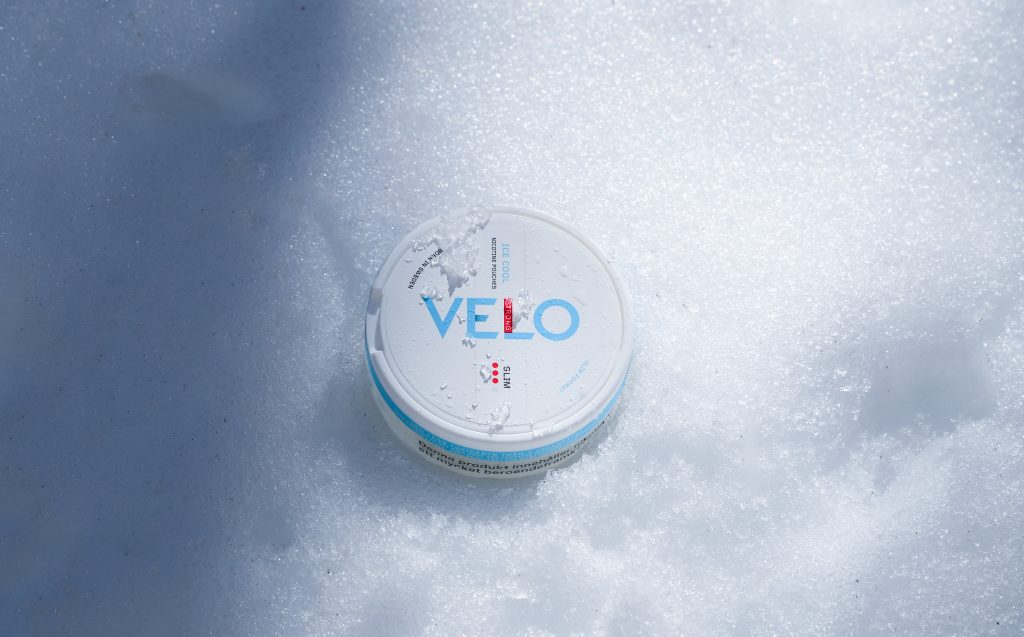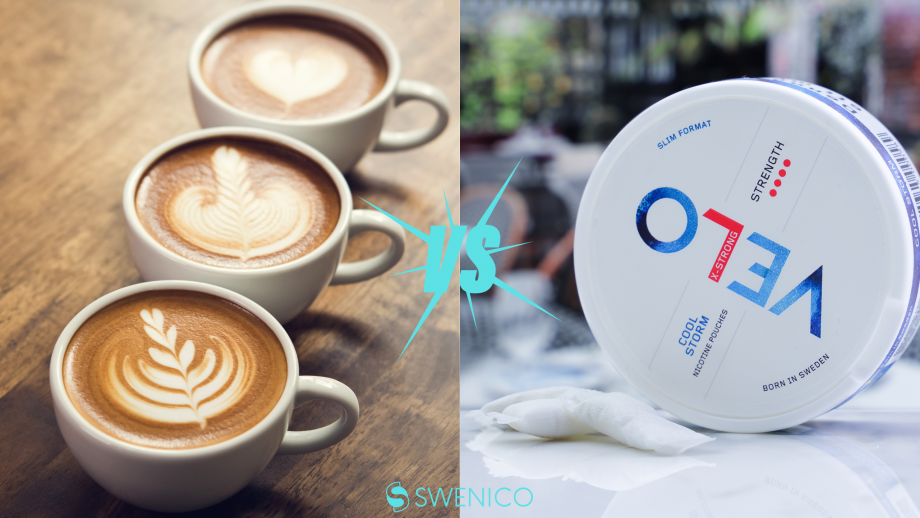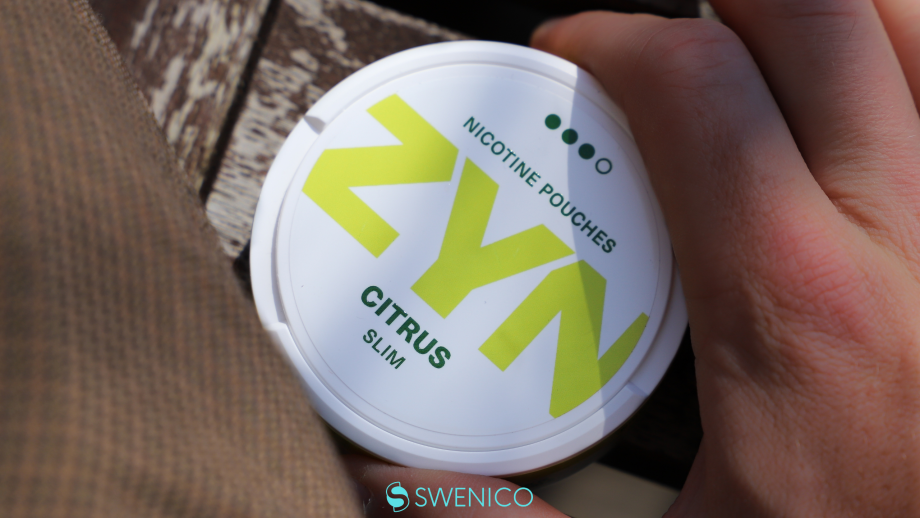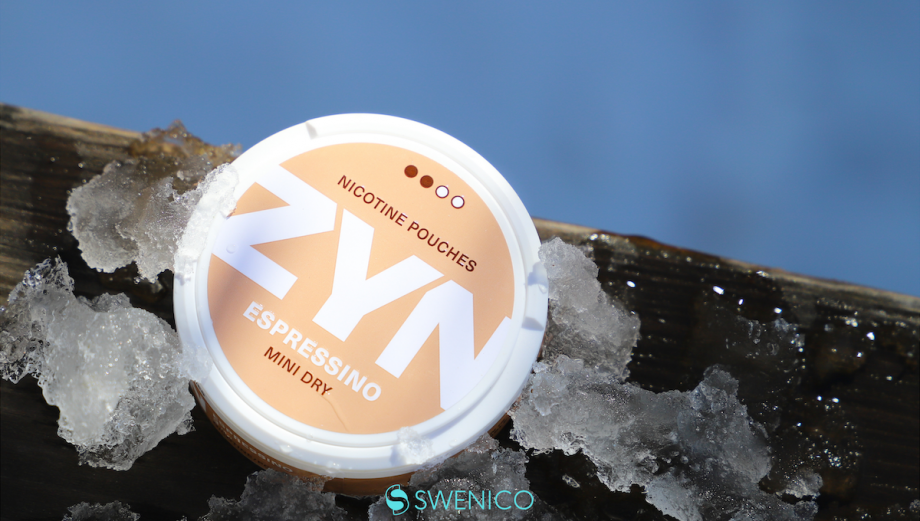Nicotine is the ”active” ingredient in nicotine pouches and the main reason people use them. Caffeine is the ”active” ingredient in coffee that is associated with increased energy and is associated with suppressing tiredness.
Nicotine and caffeine are both stimulants that stimulate the body and have a certain effect on how we feel. Since both coffee and nicotine pouches are used for their stimulating effects, we thought it would be interesting to compare them side-by-side to better understand their similarities and differences.
Brief Overview of Nicotine Pouches and Caffeine
Both nicotine and caffeine have a long history in human history. What has changed, however, is the delivery methods, especially for nicotine.
Coffee has been drunk for centuries and nicotine has been used by humans for thousands of years by smoking. In fact, the earliest credible evidence of coffee drinking dates back to the middle of the 15th century in Ahmed al-Ghaffar in Yemen.
Tobacco has been growing in the Americans for nearly 8000 years and it is estimated that tobacco began to be chewed and smoked during cultural or religious ceremonies and events around 2000 years ago.
The method of delivery for caffeine has remained the same over all this time (drinking), even though the techniques for making coffee have evolved a lot. Nicotine delivery methods are perhaps what has changed the most. Whilst smoking and chewing tobacco was most common in the early days, new nicotine delivery methods have gotten increasingly popular in recent decades.
One such nicotine delivery method is nicotine pouches, offering a tobacco-and smoke-free nicotine delivery method. Nicotine pouches have grown immensely in popularity in recent years due to their convenience and less harmful nature. The development of nicotine pouches was made possible due to the technique of extracting nicotine from the tobacco plant and manufacturing nicotine in pure form, although this technique has existed for centuries.
Whilst nicotine is used widely in many different delivery forms (with the most common being smoking), caffeine is the single most popular stimulant consumed around the world. Caffeine serves as a central nervous system stimulant, offering a boost in alertness and temporary relief from fatigue.
The popularity of nicotine pouches has been primarily driven by an increased awareness of health and understanding of the detrimental effects that smoking has on our health. This has caused manufacturers to develop new, less harmful nicotine delivery methods, including nicotine pouches, nicotine gums, patches, vapes, and of course nicotine pouches.
Now, let’s compare nicotine pouches and caffeine.

Nicotine Pouches
As we have concluded, nicotine has been consumed by humans for thousands of years in various forms. However, nicotine pouches in particular have only been around for a decade, first arriving in the early 2010s.
Nicotine pouches are a product development of traditional Swedish tobacco snus which has been used for centuries and has a long tradition, in particular in Sweden. Nicotine pouches began to be developed as the market was asking for a tobacco-free alternative that offered the same experience, and possibly with new and more appealing flavors than tobacco.
As a result, manufacturers began experimenting with how they could eliminate the tobacco from the pouches yet still provide the same snus experience. The result was nicotine pouches – achieved by replacing the tobacco with plant fiber and then adding nicotine afterward.
Nicotine Pouches are placed under the upper lip where they release nicotine into the bloodstream via the oral mucosa. This is of course different from the most common nicotine delivery method of inhaling smoke and then having the nicotine absorbed via the lungs. The use of nicotine pouches provides a steady and almost rapid nicotine delivery as opposed to smoking.
Whilst studies are constantly being conducted, it is without a doubt say to say that nicotine pouches are considerably less harmful than smoking due to the absence of the inhalation of smoke.
Nicotine is, however, an addictive substance. Like most substances, humans develop a tolerance for nicotine. Inexperienced users who consume nicotine may experience dizziness or nausea whereas experienced users generally tend to increase the nicotine strength in the pouches over time to experience the same effect.
The effect of nicotine is very rapid and reaches your brain within 10 seconds after it enters your bloodstream. It makes the brain release adrenaline which creates a buzz of pleasure of energy. Simply put, nicotine provides feelings of pleasure and concentration.
Caffeine
Coffee also has a long and rich history and has been consumed for hundreds of years. Caffeine is naturally occurring in the coffee bean and coffee is the single most popular way to get access to caffeine. In recent years, many new and interesting caffeine products have appeared on the market, including caffeine gums, patches, and more, but coffee remains the single most popular caffeine delivery method by far.
Caffeine is a central nervous system stimulant and is the single most commonly consumed stimulant in the world. Caffeine most commonly comes from the coffee bean, although other plants also contain some levels of caffeine, including tea leaves, and cocoa beans. In addition to coffee, other common caffeine sources include energy drinks, soft drinks, and even some foods.
With that said, caffeine has come to play a rather important role in cultures around the world.
So, which effects does caffeine have?
Caffeine’s primary mechanism of action involves blocking adenosine receptors in the brain which leads to increased alertness and a sense of wakefulness. Moderate caffeine consumption is generally considered safe for most individuals and is associated with cognitive benefits but excessive intake can result in adverse effects. These may include insomnia, jitteriness, and increased heart rate. In extreme cases, it could lead to caffeine toxicity.
Just like with nicotine, humans develop a tolerance for caffeine the more we consume. People who are not used to caffeine can experience a great effect only from 1 cup of coffee whereas more tolerant users can drink multiple cups of coffee a day without experiencing anything notable.
In recent decades, coffee has actually become more trendy, and more and more people have become increasingly interested in the art behind coffee making, putting more focus on things like the quality of the means, brewing methods, and more. Nowadays, you can find coffee shops and cafés in every corner that specialize in making high-quality coffee, which highlights the importance of coffee (and caffeine) in our culture.
A Head-to-Head Comparison: nicotine vs caffeine
Caffeine and nicotine (pouches) both play important cultural roles around the world. Both of these substances are widely consumed all around the world in different forms. And whilst nicotine pouches are not the most common form of nicotine consumption, it is becoming increasingly popular as people are getting increasingly aware of the health consequences of smoking.
Stimulant Properties
Nicotine Pouches: Nicotine is a stimulant found in tobacco that acts on the central nervous system which leads to increased alertness and a sense of relaxation. It can elevate mood and improve concentration.
Caffeine: Caffeine is an adenosine receptor antagonist that stimulates the release of neurotransmitters which results in heightened alertness, improved mood, and enhanced cognitive function.
Addiction Potential
NicotinePouches: Nicotine is highly addictive substance and the use of pouches may contribute to dependency.
Caffeine: Caffeine is addictive to a lesser extent than nicotine but it is still addictive. Regular and excessive consumption can lead to physical dependence which can result in withdrawal symptoms such as headaches and irritability.
Impact on Cardiovascular Health
Nicotine Pouches: Nicotine pouches are a much less harmful alternative than smoking but the nicotine in them still has some effects on the body. Nicotine is known to raise blood pressure and heart rate. More studies need to be conducted to conclude the exact health effects of nicotine pouch use.
Caffeine: Moderate caffeine consumption is generally considered safe for most individuals. Some studies even argue that caffeine in moderate amounts is good for us. With that said, excessive caffeine intake can lead to increased heart rate and blood pressure which can pose posing risks for those with cardiovascular concerns.
Potential for Overdose or Toxicity
Nicotine Pouches: An excessive intake of nicotine can lead to nausea and dizziness. There is such a thing as nicotine poisoning if huge amounts of nicotine are consumed. This is why it is important for beginners to choose a low-strength nicotine pouch to avoid adverse effects.
Caffeine: It is difficult to overdose on caffeine through traditional beverages but more concentrated sources like energy drinks or caffeine supplements can lead to caffeine toxicity. This can result in symptoms like palpitations and nausea. If you have, for example, drunk a large amount of coffee or energy drinks in a short period of time span, you may have noticed an increased stress level and a faster pulse.
Social Acceptance
Nicotine Pouches: Historically, smoking was completely normal and socially acceptable. However, with a growing awareness of the health consequences of smoking, the social attitude towards smoking has diminished. As a result, other, less harmful alternatives likely nicotine pouches have become more acceptable. Whilst most people are still unfamiliar with nicotine pouches, they are socially acceptable in countries where their use is widespread, in particular in Sweden. The social acceptance of nicotine pouches in the rest of the world varies but is most importantly difficult to measure seeing that it’s relatively unknown. At the same time, it doesn’t matter a lot seeing that their use is completely discreet and no one has to know you are using them.
Caffeine: It’s safe to say that caffeine is highly socially accepted. In fact, it is widely accepted and integrated into daily life. Coffee plays an important cultural role and it is common for people to meet for a cup of coffee. Coffee therefore often plays a role in social activities.
Practical Considerations
Accessibility and Availability
Nicotine Pouches: Accessibility to nicotine pouches depends on regional regulations and local market dynamics. Because nicotine pouches are a relatively new product, their accessibility can vary. In countries like Sweden where their use is widespread, they can be found in virtually every corner and are very easily accessible. In other countries, users may be limited to ordering online. On the other hand, nicotine products as a whole are generally to be found anywhere in the world very easily.
Caffeine Products: Caffeine enjoys widespread accessibility. Coffee, tea, energy drinks, and caffeinated snacks can be found virtually in every household and in essentially every single restaurant, office, and café. This is why caffeine is the single most accessible stimulant in the world.
Cost
Nicotine Pouches: The cost of nicotine pouches can vary based on things like brand, formulation, and regional pricing. Nicotine pouches are, however, considerably more affordable than traditional nicotine delivery methods, i.e smoking. A can of nicotine pouches generally costs around $4 and contains around 20 pouches. This is why the cost per serving is very low, even lower than a cup of coffee in most cases.
Caffeine Products: The cost of caffeine products varies significantly. Brewing your coffee is generally quite affordable but a cup of coffee in a café like Starbucks can be quite expensive. A single cup of coffee can cost up to 10 dollars. In addition, other caffeine products like energy drinks can be quite costly.
Convenience and Portability
Nicotine Pouches: One of the main reasons why nicotine pouches are popular is due to their convenience and portability. Nicotine pouches are one of the most convenient and discreet nicotine products on the market. With traditional tobacco products, you need to interrupt whatever you are doing to go outside. Nicotine pouches offer a convenient and hands-free way to consume nicotine. The great thing about nicotine pouches is that they can be used anytime and anywhere. In addition, they can be used without anyone knowing, which is different from most other nicotine products. Moreover, nicotine pouches are particularly appreciated as they can be used in situations where smoking may not be allowed, such as on airplanes, indoors, or in public transport. With nicotine pouches, you can simply take a pouch and carry on with whatever you are doing without being interrupted.
Caffeine Products: The convenience of caffeine consumption varies based on the form. How convenient they are ultimately depends on the type of product and the situation. It’s not exactly difficult to take a cup of coffee to go to a café or take a cup of coffee in the office from the coffee machine. It’s also relatively easy to brew a cup of coffee at home, whether you have a coffeemaker or a coffee machine. Modern coffee machines are very convenient to use. Energy drinks and other caffeine products are generally also quite convenient and portable to use.
Final thoughts: Caffeine vs nicotine pouches
All in all, nicotine pouches (nicotine) and caffeine share some similarities of being two stimulants that are widely used all around the world.
Whilst nicotine pouches are relatively new compared to other nicotine products, nicotine is a stimulant that, just like caffeine, has an important cultural importance.
In one sense, caffeine and nicotine pouches are difficult to compare but on the other hand, both of these are used for their stimulating effects. Caffeine is generally used for its invigorating and stimulating effect and so is nicotine. With that said, both nicotine pouches and caffeine are used for similar purposes.
What makes the comparison quite tricky is that nicotine is so closely associated with smoking, which is why it has gotten a negative social acceptance over the last couple of decades (as public awareness of the dangers of smoking increases). Interestingly enough, nicotine pouches have developed a more positive social acceptance due to their potential health benefits compared to smoking. Therefore, as the market for nicotine products evolves and nicotine pouches become increasingly popular, it is possible that the view of nicotine as a stimulant will get a similar perception as caffeine
Because at the end of the day, it is very important to distinguish nicotine as a stimulant from smoking. So if we compare nicotine as a stimulant and caffeine as a stimulant, the comparison becomes more interesting.






